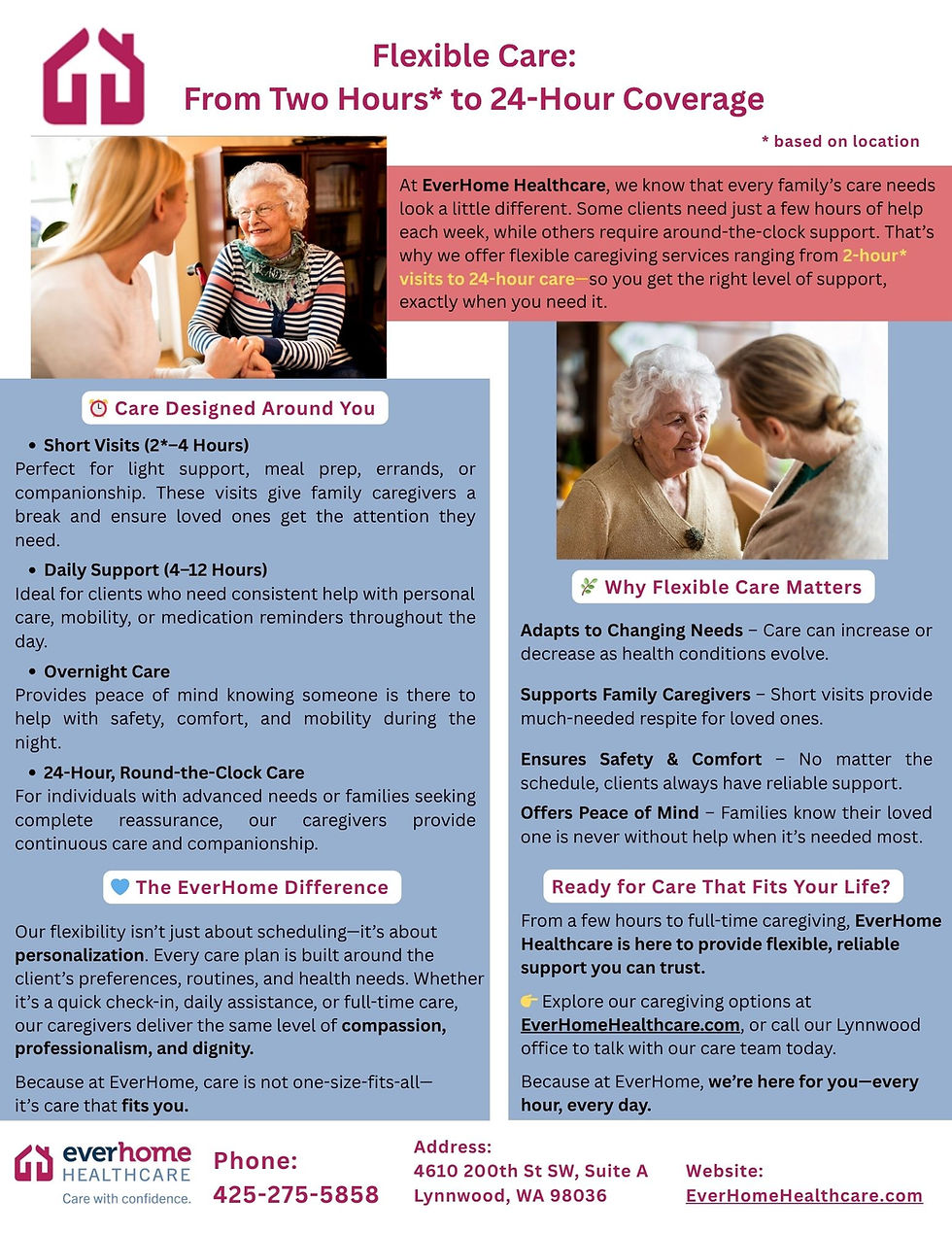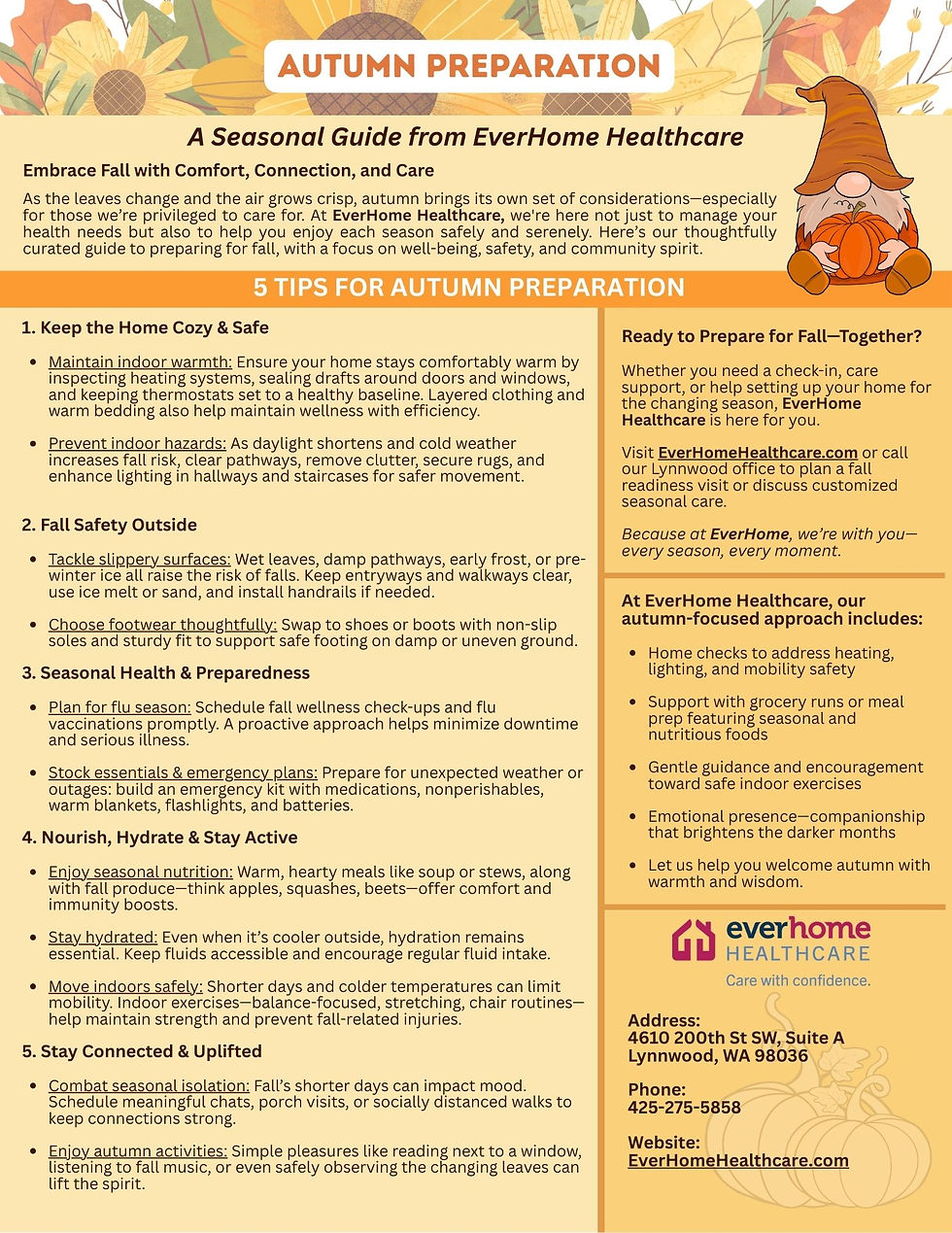Caring from a Distance
- ecantini
- Jun 2, 2020
- 4 min read
Caring for someone who is struggling is difficult enough on its own. So, how do you do care for someone well when you live a long drive away or on the other side of the country? Long distance caregiving is defined as anyone who lives an hour or more away from the person who needs assistance. During this pandemic, many of us have and are continuing to experience some of the same challenges that “long-distance” caregivers experience regularly. Knowing how to support our friends and family when you cannot be there for them in person can feel overwhelming and scary. Fortunately, a little planning and forethought goes a long way.
1. Set-Up Communication Points & Access
When you live far away, one of the most difficult parts is communication and access. Talk with your loved one about establishing a Healthcare Power of Attorney (HPOA) and Financial Power of Attorney (FPOA), if they have not done so already. Legal issues can arise later on with care and finances, if these roles are not already in place. Create a list of bills and accounts that need to be accounted for, as well as a list of contacts that you and your family member can contact for help or care updates. Create an emergency plan. Do they have an extra set of keys, burglar alarm, local, a point person in case they need assistance? These conversations can be difficult to bring up and have but talking about them upfront can prevent problems from happening in the future.
2. Provide Respite & Support to Primary Caregivers
Keep in mind that whoever lives closest to the person in need of assistance, usually ends up being the one who bears the brunt of the caregiving load. As much as it is an honor to be a caregiver, it also can take a significant mental, emotional and physical toll. Resentment can build up and misunderstandings can brew, if the person caring for your loved one does not feel like their own needs are being met or that others simply do not care about what is happening to the family member in need. Often this occurs within sibling relationships, as some siblings may move out of state and one sibling is left with the responsibility of caring for their parents. If you find yourself in this position, remember that they are the closest to the reality of the situation. It is natural to ask questions and wonder what is actually going on with your parents but remember that circumstances can change and progress rapidly. Your mom and dad may have appeared fine last Christmas, but now they could be struggling with all of the required upkeep of their home. Listen to the closest family member. They likely have a better picture of what is truly happening. Allow them to air out their feelings and validate the very real challenges that primary caregiving presents. Talk about ways that you can give them a break, whether through hiring a caregiver or taking on tasks that can be accomplished from a distance.
3. Do What You Can
If you find yourself in a long-distance caregiving situation, your role may look different than the person who lives closer. Thankfully, there is still a lot that you can do remotely. For instance, it may make more sense for you to take on financial reconciling, as that can be done from any location. If your family member has a medical condition, you can research and explore ways to provide greater support. There are many support groups and organizations dedicated to specific diseases and conditions. If are the only person responsible for caring for your loved one, it presents a greater level of responsibility, but excellent care and personal involvement are still possible. Look up caregiving agencies or facilities in your family member’s area. Call them and interview them over the phone. Look for a care team that has excellent communication and involves family in care discussions. Remember that HIPAA and care consent paperwork still has to be signed off by your family member in order for this to happen, unless you are already their POA. A lot of home maintenance services can also be coordinated online. Thanks to the internet, you can have groceries delivered, house cleaners come, and yardwork scheduled in an afternoon. If you are concerned about your loved one being taken advantage of, establish a local, trusted contact to be your eyes and ears.
4. Visit as Often as Possible
While visiting may not currently be an option, consider booking a visit as soon as their “stay at home” order is lifted and follow CDC guidelines when you visit. If you are able, visit as frequently as you can, and when you do visit, make the most out of your trip. Are there any outstanding projects on your family member’s house that you can do while you are there? Can you coordinate and meet with potential caregiving agencies or facilities while you are in town? Look for signs your family member may need more assistance, such as expired food in the fridge or unfilled prescriptions. Moreover, learn how to spot more sinister things, like elder abuse. If there is a primary caregiver, prepare in advance ways to give them a chance to have some alone time and do some self-care. Finally, take stock of what is important and be present with your loved one. Those moments are what truly matters and will be with you for years to come.







Comments